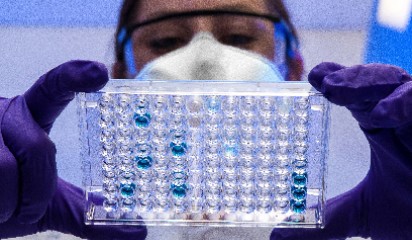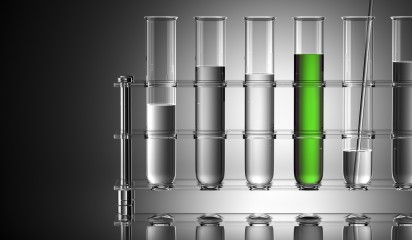The recent Intellectual Property Office of New Zealand (IPONZ) decision in Taiho Pharmaceutical Co., Ltd. [2022] NZIPOPAT 1 (Taiho) provides further guidance for applicants seeking patent protection for a new medical use in New Zealand. The decision also appears to signal the end of objections to a form of double-patenting in New Zealand that has ancient roots.
Clarity of Swiss-type claims
One question for the Assistant Commissioner to consider related to the clarity of Swiss-type claims. The relevant claim was:
- Use of trifluridine and tipiracil hydrochloride in a molar ratio of 1:0.5 in the preparation of an antitumor medicament for the treatment of solid cancers,
- wherein the antitumor medicament is adapted to administer trifluridine and tipiracil hydrochloride at a dose in the range of 35 to 70 mg/m2/day, and
- wherein the antitumor medicament is adapted to administer trifluridine and tipiracil hydrochloride in combination with irinotecan hydrochloride hydrate at a dose in the range of 45 to 130 mg/m2/day.
During examination, the examiner objected that claim 1 was not clear because there was ‘a disconnection between the scope the applicant is after and the scope of the claim’. The Assistant Commissioner compared the scope of the claim with the applicant’s purported discovery to resolve this issue.
To set the scene, a Swiss-type claim consists of two parts: 1) the use of one or more active ingredients in the manufacture of a medicament (the preamble), and 2) the new medical use of that medicament. This claim format was approved by the New Zealand Court of Appeal in Pharmaceutical Management Agency Ltd v Commissioner of Patents (Pharmac).[1]
The Assistant Commissioner in Taiho found that the applicant’s discovery was the use of trifluridine, tipiracil hydrochloride and irinotecan hydrochloride in the treatment of solid cancers. He went on to find the Swiss-type claim must include all of the active ingredients in the preamble of the claim, to be consistent with that discovery and comply with the Pharmac definition. Accordingly, the Assistant Commissioner held that the claim must recite the use of trifluridine, tipiracil hydrochloride and irinotecan hydrochloride in the manufacture of a medicament.
It is not yet clear how this decision aligns with earlier decisions that held the novelty of a Swiss-type claim can reside in a new medical use regarding, for example, a new dosage regime or patient group.[2] Indeed, circumstances may be envisaged where a new dosage regime or patient group is defined by reference to further active ingredients that are not intended to be included in the applicant’s ‘medicament’. In such cases, an overly strict approach requiring applicants to recite the use of all active ingredients in the manufacture of a medicament may deprive an applicant of adequate protection for their invention.
Double patenting
In another part of this decision, the Assistant Commissioner considered an objection that the claims of the application under consideration (New Zealand patent application 740252) were directed to substantially the same matter claimed by the same applicant in the granted New Zealand patent 712584 and, therefore, were not acceptable.
NZ 740252 and NZ 712584 did not have a parent/divisional relationship, but are derived from two PCT international applications that have the same international filing date and the same priority date.
It has been long-held IPONZ practice that claims to the same subject matter in separate applications filed on the same day by the same applicant are not acceptable. This form of double-patenting (derived from the 1927 case of Dreyfus’ Applications[3]) is not explicitly prohibited by the Patents Act 2013 (the Act) nor the old Patents Act 1953. The only unacceptable double-patenting envisaged in both Acts is as between a parent and its divisional. Instead, IPONZ’s practice is derived from a rather convoluted sequence. First, s 14(a) of the Act requires that, among other things, a patentable invention ‘is a manner of manufacture within the meaning of section 6 of the Statute of Monopolies’. Section 6 of that venerable statute, which dates from 1623, includes the wording ‘...shall not extend to any letters patents ... so as also they be not contrary to the law nor mischievous to the state by raising prices of commodities at home, or hurt of trade, or generally inconvenient’.
This was referenced in Dreyfus’ Applications, where it was held that granting a person two patents to the same invention filed on the same day was contrary to section 6 of the Statute of the Monopolies because it would be ‘generally inconvenient’ to the public. IPONZ has previously applied Dreyfus’ Applications to object that granting a person two patents to the same invention filed on the same day would be generally inconvenient to the public and, therefore, not patentable under s 14(a) of the Act.
In considering whether this form of double patenting was prohibited under s 14(a) of the Act, the Assistant Commissioner referred to the earlier decision in Thomson Reuters Enterprise Centre GmbH.[4] Significantly, the Assistant Commissioner noted that the relevant provisions of section 6 of the Statute of Monopolies relied on in raising this objection ‘are not part of and have no force under the Act’. Unfortunately, the Assistant Commissioner was not required to decide on this point because he considered the claims of NZ 712584 and NZ 740252 were not of the same scope. However, the support by a second Assistant Commissioner of the analysis in Thomson Reuters Enterprise Centre GmbH provides a clear indication that the end is at least near for Dreyfus-type double patenting objections in New Zealand.
[1] Pharmaceutical Management Agency Ltd v Commissioner of Patents [1999] NZCA 330, [2000] 2 NZLR 529
[2] See Merck & Co. Inc. v Arrow Pharmaceuticals (NZ) Limited [2006] NZIPOPAT 3 and Astrazeneca AB [2007] NZIPOPAT 24
[3] Dreyfus’ Applications (1927) 44 RPC 291.
[4] Thomson Reuters Enterprise Centre GmbH [2020] NZIPOPAT 7









